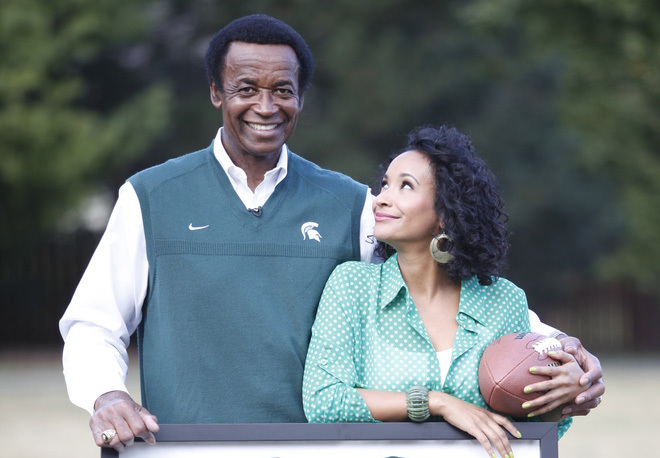A view on winter
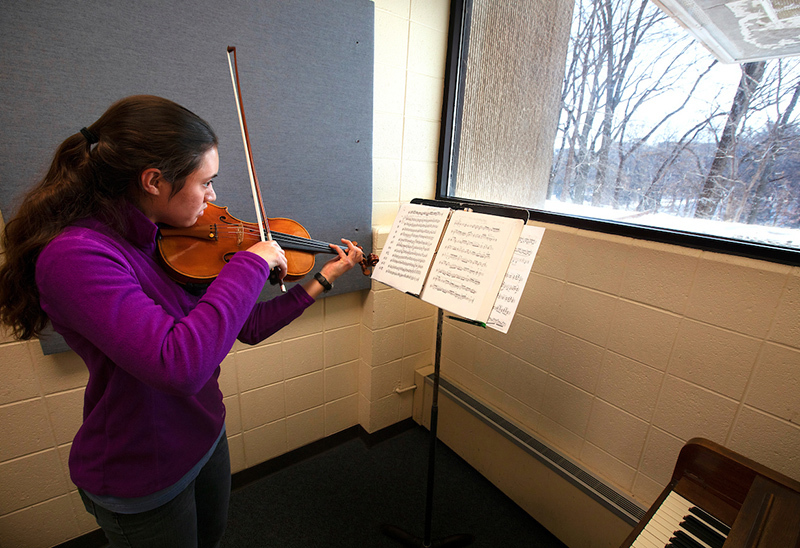
Photo by Christopher Gannon.
Sophomore music major Amelia Dixon practices her violin in a Music Hall rehearsal room with a wintry view Tuesday afternoon.
Librarians are eager to help through live chat
One of the first lessons everyone learns about a library is the expectation of quiet.
That isn't exactly how it works at the University Library. Sure, it's not advisable to go screaming from one floor to the next, but when there are questions, the librarians want people to speak up and are eager to talk. Since 2003, the library has had a live chat function on its website to answer questions students, faculty, staff or anyone in the world may have.
The live chat is part of the library's "Ask Us" page. Twelve librarians take turns monitoring the chat weekdays from 9 a.m. to 5 p.m.
"People are sometimes shocked they are talking to a real person," head of research services Lorrie Pellack said. "We are all trained librarians who have specific subject areas."
Each librarian spends two to five hours a week in the live chat. In a time when technology has changed much of what a librarian does, Pellack said she and her staff value this time.
"Most of them went through school wanting to work at the help desk at the front of the library," she said. "We are not out in the public area staffing those anymore. This is a way we can regularly help people and get that satisfaction."
Wide reach
The number of individuals reaching out through the live chat continues to grow, ranging from 1,000 to 1,400 chats a year from 2016 to 2019.
Since August, new software from LibAnswers allows for a red "Live Chat" widget to float on the lower right corner of the screen when viewing the library webpages. The new chat module also allows for anonymous questions, which Pellack said is important because the library is not trying to collect data on users.
So while there is no way to know who is taking advantage of the service, Pellack believes the chat users mirror the majority of those who come to the actual building -- undergraduate and graduate students.
There are 72 frequently asked questions users can scroll through ranging from "Where is a notary public on camps?" to "Which login and password do I use for the library?" Most questions are answered during a chat session, but a complex issue may get forwarded to another librarian who is more familiar in a certain field. Email is effective for questions that require more research or if a language barrier exists.
Most questions come from those on campus or in the surrounding communities, but over the past four years there have been questions from Texas, California and Alabama and across the world from Canada to Nigeria.
Helping out
From tracking down corn yield records in surrounding states to aiding an emeritus faculty member working on a book in their newly found free time, each day brings a different challenge.
"We are glad they are using the service. I don't think there is a lack of questions out there, I just think people are not aware of our service," Pellack said.
Not all questions may seem to carry the same level of urgency, but that is in the eye of the beholder. Pellack said one of the more interesting developments has come with the increased volume of users at the computer stations in the library.
"Our workstations out in the library are so full, [students] don't want to get up to ask a question because they will lose their computer," she said. "So [through live chat] they will say, 'I am on the fourth floor looking for a book I can't find, can you help?'"
The chat also can alert staff to issues -- for example, a subscription service being down -- that otherwise may go unnoticed, Pellack said.
Who can use the service?
The live chat is available for anyone, even if they are not affiliated with the university.
"We are able to help researchers who don't have access to a library," Pellack said. "As a land-grant institution, we welcome all questions from anywhere in the world, and we don't even ask who they are."
There are a few restrictions on how much help librarians can give to those not connected with the university.
"We can't supply full-text journal articles that we have a subscription for to someone who is not with ISU," Pellack said. "Also, access to some of our databases is limited."
There are limits on what can be accessed remotely, but anyone -- ISU affiliated or not -- can visit the library and download any article or other resource and take it with them.
Looking ahead
Pellack hopes to grow the hours of the live chat to respond to students' need.
"A lot of the students are from surrounding communities, and they go home for the weekend and come back on Sunday ready to do their homework," she said. "We are not staffing on Sunday and the paper is due on Monday.
"So we are toying with expanding at some point, hoping it would give us more point of need with the students."
ISU Printing's variety is unbound by paper
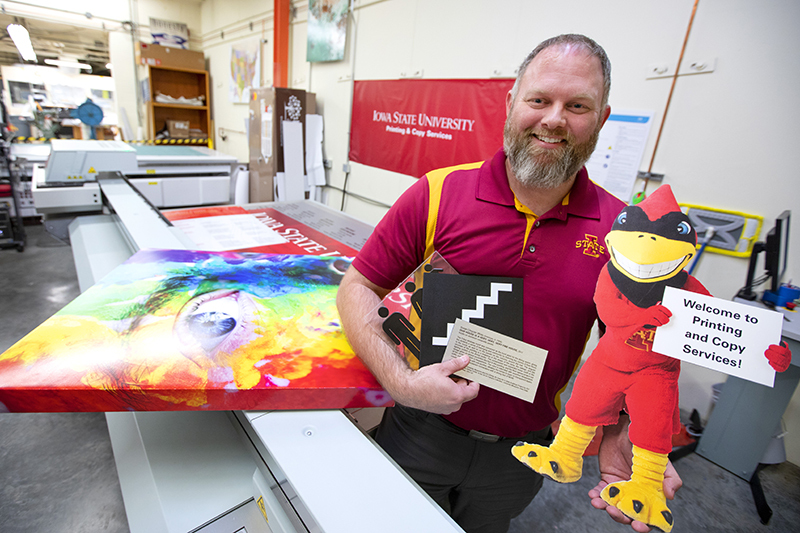
Nathan Thole, director of printing services, with some of the many items that can be made with the large flatbed printer and cutter behind him. Photo by Christopher Gannon.
Founded in 1922, the university's in-house printing operation is approaching its 100th birthday, a century dominated by black print on white paper. While there's still a need for established products, what printing services offers its campus clients has evolved far beyond the page.
"We're not just your traditional printer any more. We do so much that you might not think of," said Nathan Thole, director of printing services.
One new center, two closing
Later this spring, printing services will close its two satellite copy centers and open a new location in the Student Innovation Center. Director Nathan Thole said the Student Innovation Center location will be larger and more visible than either of the existing copy centers in the Memorial Union and the Union Drive Community Center. The date of the transition isn't set yet. The Student Innovation Center will open in April.
Over the past year and a half, the self-funded unit -- which recently dropped "and Copy" from its name to emphasize copying is an increasingly limited part of its business -- has been more proactive in spreading the word about its capabilities.
"We've always added new services and new things we can do. I think the thing we've lacked is letting people know," said assistant director Zach Covington.
The ramped-up communications effort has included tours of the main plant at 2333 Kooser Drive and lunch-and-learn meetings. The most recent improvement is a redesigned website, which launched last week with additional resources such as design tips, photos of product examples, links to copyright and branding information, and easy-to-grasp descriptions and illustrations of paper, print, binding and finishing options.
"It's a tool to refer customers to that helps explain what we do," Thole said.
Here are a few services you might not realize printing services offers:
Printing expanded
Printing services has produced wide-format products such as posters and banners for more than a decade, but a flatbed printer and accompanying cutter purchased in 2018 was a big versatility boost. The flatbed prints on rigid materials up to 4 feet by 8 feet that are less than 2 inches thick, and the programmable cutter can create any shape. That opens the door for custom metal signs and letters, acrylic award plaques, magnets, coasters, and wraps or graphics for vehicles, windows, floors, doors, walls or even an entire room.
"Those machines really enhance our product offerings," Thole said.
They've also brought some efficiencies. For instance, the flatbed printer speeds up production of wayfinding and room signage with Americans with Disabilities Act-compliant Braille lettering. Printing services took on production of the signs, which have been handmade in the university's sign shop. The flatbed printer creates the Braille writing by building 12 layers of ink to about 1/32 of an inch. They are made in batches of at least 55 in about the same amount of time it takes to manually create a single sign.
Mail help
Using printing services for mailings potentially brings two benefits.
It can save money, dropping the per-item cost in some instances from 50 cents to 15.9 cents, said customer service supervisor Christy Hand. Postal discounts secured by printing services, in part by using a database to verify and correct addresses before they're mailed, saved the university nearly $900,000 in 2019.
Printing services also can help clients make individualized mail pieces. Variable data printing extracts information from address databases to customize mailings, a service Hand said the office of admissions often uses.
"I'm sure there's a need for that in other areas, too. It's one of those things people wouldn't think of in printing. We do a lot of it, and we're good at it," Covington said.
Campus-focused
Iowa State policy requires printing services to supply all university printing, other than office copiers and individual printers used for convenience. But printing services staff aim to ensure campus customers wouldn't want to work with another shop. Ninety-three percent of the shop's 17,663 orders in fiscal year 2019 were delivered on time or earlier, for instance. Prices are competitive, delivery is free and orders don't compete with off-campus work for priority.
"Our mission is to save the university money. That's not going to exist anywhere else," Covington said.
The unit's prepress team can help campus clients with design, if needed.
"Our customers are all over the spectrum in terms of their design ability. Some are full-fledged graphic designers," Thole said. "Sometimes, we're more of a publisher designing something for the customer. We get everywhere in between, all levels of skills."
Printing services also arranges for printing work they are unable to do, as required by the printing policy. Having an on-campus buyer brokering those transactions is an advantage for clients with little experience in printing, Covington said.
"If it's a language you don't speak every day, we can speak it for you," he said.
Solution is near for campus emails diverted to junk folders
Loyal readers of many campus e-newsletters and emails have had to search their junk email folders recently to find their latest installments. Most likely it's because Microsoft's Outlook spam filters -- in a valiant attempt to divert fraudulent or unsolicited pleas to where they belong -- see red flags when a mass email from an outside vendor such as Constant Contact or Mail Chimp is sent from an @iastate.edu address.
"The filters see that combination as a forgery and flag it as junk," explained Chris Farley, interim manager of IT services' identity services unit, which includes email. He noted that filtering email is a multilayered process that must change frequently to be effective.
Farley's team has been aware of the issue for several weeks and is testing a solution that would authenticate messages sent by select third-party vendors from @iastate.edu addresses. He's hopeful IT leaders will provide final approval within a few weeks.
This broader solution still wouldn't override anyone's individual spam filters that send an email to the junk folder.
Short-term strategies
In the meantime, Farley encourages Iowa State employees to check their junk folders throughout the day to see what might have landed there in error. Instead of dragging a file to your inbox, he advised readers to take the step to label it as "not junk." This moves it to your inbox but also provides feedback to Microsoft for its filters.
Communications professionals on campus whose mass emails start landing mostly in readers' junk folders are encouraged to contact the IT Solution Center and describe the problem. A service ticket will be created, and Farley's mail team will get involved.
He said his staff has assisted ISU communications teams, case by case, to achieve the best delivery possible while working to get the long-term solution in place.
Make way for green space
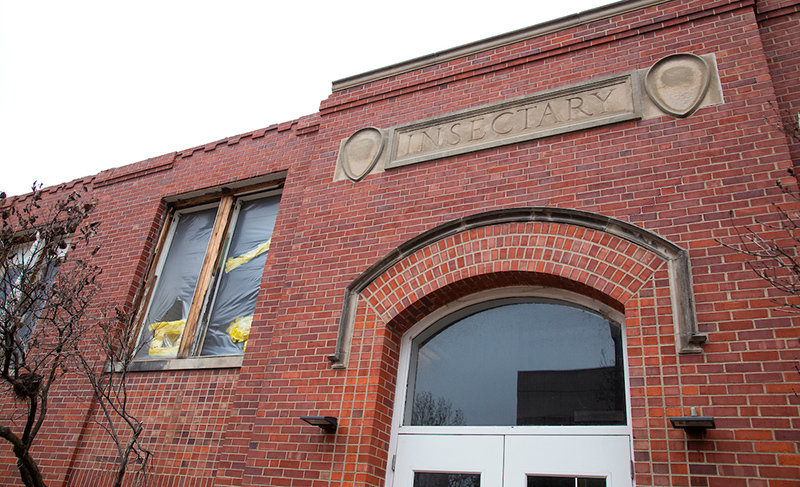
The Insectary awaits a demolition date. Photo by Christopher Gannon.
Asbestos abatement is complete on the 92-year-old Insectary on Pammel Drive and, pending the outcome of a bid opening this week, the building should be razed by June. Demolition will include its greenhouses and two nearby storage buildings of the same era adjacent to parking lot 30. The demolitions will eliminate an estimated $2 million in deferred maintenance.
As much of the demolition debris as possible will be recycled. The "Insectary" panel above the south doors will be saved for a to-be-determined repurposing.
The Insectary has been vacant since the summer of 2018, when tenants moved to either the newly opened Advanced Teaching and Research Building or Science Hall II. The site will become a green space.
Two faculty begin provost's office appointments
Two Iowa State faculty members kicked off 2020 in new part-time roles in the provost's office.
Tera Jordan, associate professor in human development and family studies, will serve a three-year appointment as assistant provost for faculty development. Susan Arendt, professor in apparel, events and hospitality management (AESHM), begins a two-year appointment as the online learning faculty fellow. Both positions are half time and began Jan. 1.
Fostering faculty success
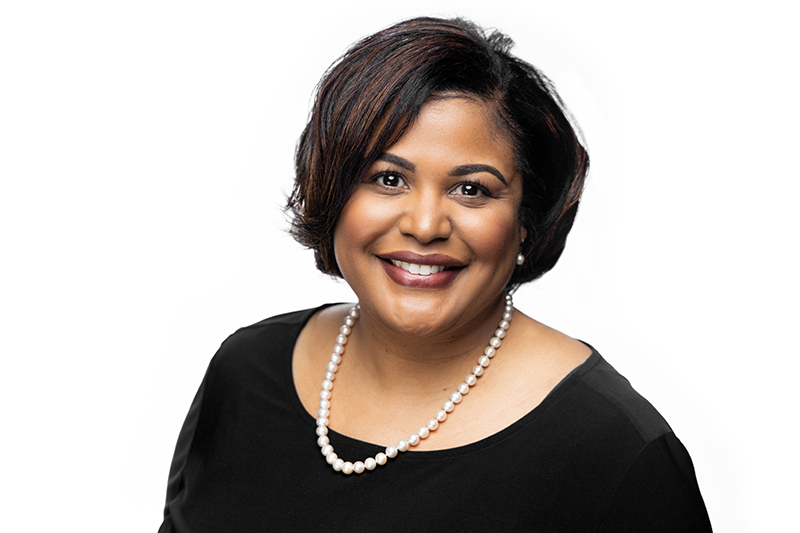
Tera Jordan
Jordan, in her role as assistant provost for faculty development, will support ongoing programming and policy development to increase faculty success. That includes leading Iowa State’s ADVANCE initiatives, enhancing faculty mentoring, coordinating analysis of faculty data from surveys and other sources, and broadening participation in work-life integration and dual-career hiring. She also will lead Iowa State's participation in the Aspire Alliance's IChange Network, which aims to improve success and retention of underrepresented STEM faculty. She'll work collaboratively with colleges and departments, as well as other units across campus, to support the university's commitment to equity, diversity and inclusion.
Reporting to associate provost for faculty Dawn Bratsch-Prince, the assistant provost position replaces the work of the ADVANCE faculty fellow. Lisa Larson, professor of psychology, had most recently served in that role since 2015, leading the program designed to retain, recruit and advance women and people of color in faculty posts.
“Many factors contribute to faculty success, and each faculty member is different in their needs,” Bratsch-Prince said. “Tera will develop and promote innovative approaches to supporting all Iowa State faculty throughout their careers, from their first day on campus to their promotion to full professor.”
Jordan joined the Iowa State faculty in 2012. She's an Indiana native who earned her bachelor's degree in applied health science from Indiana University, Bloomington, and her master's and doctoral degrees in human development and family studies and demography from Pennsylvania State University, University Park.
A vision for online education
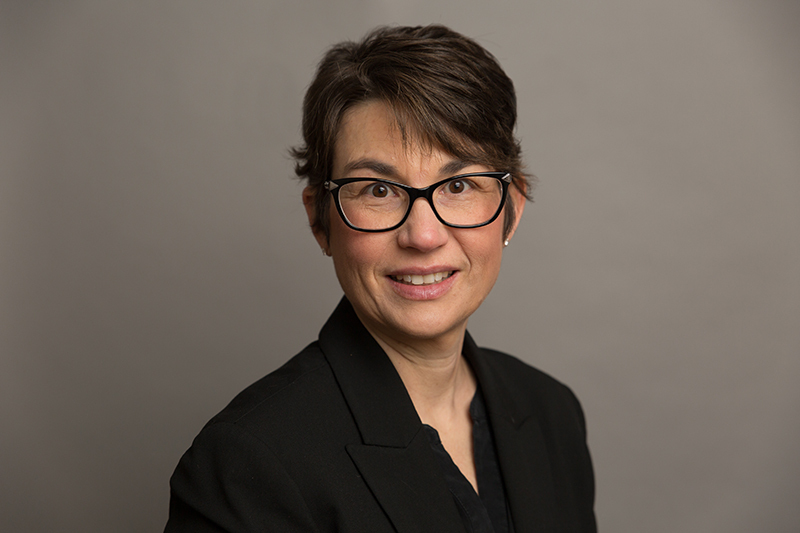
Susan Arendt
Arendt, in her role as online learning faculty fellow, will work with campus partners to grow Iowa State's online courses and programs. She will form and chair a steering committee to create a strategic action plan and work with colleges, information technology services, digital accessibility and the Center for Excellence in Learning and Teaching. She'll also serve as the university's online learning liaison to national organizations and coordinate with the state Board of Regents on goals and priorities for online and distance education.
The fellowship position reports to associate provost for academic programs Ann Marie VanDerZanden.
“Every institution is unique when it comes to online education,” VanDerZanden said. “Susan will help us develop a long-term strategy that builds on Iowa State’s unique academic strengths, streamlines how we deliver online courses, and meets the needs of undergraduate and graduate learners, and also employers, who often reimburse students for their online coursework.”
According to the most recent Board of Regents distance education report, Iowa State delivered 1,013 course sections of distance education in fiscal year 2018, accounting for nearly 82,000 credit hours.
Arendt joined the Iowa State faculty in 2004. She's an Iowa native who earned a bachelor's degree in dietetics and a doctoral degree in foodservice management from Iowa State. Her master's is from Rush University, Chicago, in clinical nutrition. Prior to her fellowship appointment, she served as associate chair for undergraduate academic affairs in AESHM.
Senators consider universitywide student learning outcomes
Meeting coverage
- Inside Iowa State summaries (2006-present)
- Twitter (@InsideIowaState)
Senators will vote next month on a proposal to adopt four universitywide student learning outcomes to bring Iowa State in line with accreditation criteria. The outcomes, shared at the Jan. 21 Faculty Senate meeting, were introduced by the senate's outcomes assessment committee.
From a review of learning outcomes from each college, the committee identified four consistent measurements:
- Communication
- Information literacy
- Critical thinking and problem solving
- Global citizenship
The universitywide outcomes do not replace those at the college level, and satisfy concerns found in the Higher Learning Commission's external accreditation review. Programs and departments can tailor the learning outcomes assessments to their needs.
"Our goal with this was to create overarching language where each college could identify a link to each objective," said committee chair Courtney Vengrin. "This should not directly impact any department-level outcomes. Many of these things are already happening at the college level."
If the proposal is approved, the Faculty Handbook section on student outcomes assessment must be updated.
CELT workshop
Center for Excellence in Learning and Teaching director Sara Marcketti provided the senate with an update on the annual inclusive classroom workshops that began this month. Eleven percent of departments have completed training and more than 90% have scheduled it.
President-elect
Andrea Wheeler, associate professor of architecture, was voted the next president-elect. She will take office in May, when current president Jonathan Sturm (music) passes the gavel to president-elect Carol Faber (graphic design).
Other business
- Senators approved a resolution to bring faculty position responsibility statements into compliance with the Faculty Handbook. The resolution focused on removing words or statements that go beyond brief descriptions of responsibility areas.
- Senators approved a master of arts in teaching history in the Graduate College. The program is a collaboration between the history department and School of Education.
- The annual spring faculty conference has been postponed to next fall.
W-2s are available in Workday
As of this week, W-2 documents needed for filing state and federal income taxes are available in Workday.
Here's how to access yours: Select the "Pay" icon on the Workday home page, then click on the "My Tax Documents" button on the next page. A tax year 2019 W-2 should be available to view or print. You may need to turn off any pop-up blockers for the document to load. For more assistance, including images of how to navigate to your W-2 in Workday, consult this job aid.
W-2s are available online even for employees who requested a mailed copy, said Tim Ashley, interim assistant vice president for payroll, benefits and tax. Employees who don't have access to Workday and former employees will receive a mailed copy within the next week, he said.
1095 in the mail
All employees should receive a 1095 form in the mail soon, as well. Under the Affordable Care Act (ACA), employers with more than 50 workers are required to file these forms to demonstrate they've provided or offered health insurance to their employees.
The copy of the 1095 sent to employees no longer is needed to show that taxpayers had insurance coverage. Beginning in 2019, the ACA's individual mandate requiring individuals to carry health care coverage is no longer enforceable with a penalty.
"It's more of an informational form than anything else. It doesn't accomplish what it used to in the past," Ashley said. "Employees don't need to wait to receive their form to do their taxes."
Spring lectures kick off this week
The spring lectures series is a mix of thought-provoking titles, well-known names and timely topic selections. A special series to commemorate the centennial of the ratification of the 19th Amendment is among the nearly 40 events scheduled.
"The lectures this spring are highlighting a lot of history about prejudice and discrimination in this country and also celebrating the freedom of individuals to be who they are," said Amanda Knief, lectures program director. "We want to challenge students to consider other perspectives and think about how the past can inform the present and future."
A sampling of events is highlighted below. The full schedule is available online. All events are free and open to the public.
"How to Be an Antiracist"
Jan. 23, 7 p.m., MU Sun Room
Ibram Kendi, author of "How to Be an Antiracist" and "The Black Campus Movement," will deliver the Martin Luther King Jr. Legacy Series keynote address, challenging his audience to consider what an antiracist society would be and how they can help build it. Kendi is director of American University's Antiracist Research and Policy Center in Washington D.C., where he also serves as a professor of history and international relations.
"Through the Banks of the Red Cedar"
Jan. 27, 7 p.m., MU Great Hall
Football hall-of-famer Gene Washington and daughter Maya will lead a discussion following a screening of her film, "Through the Banks of the Red Cedar." The documentary tells the story of Gene Washington's path from the segregated South, joining the first fully integrated football team at Michigan State University and becoming one of the greatest players in Minnesota Vikings history.
"The Women's Hour: The Great Fight to Win the Vote"
Feb. 14, 1 p.m., MU Great Hall
Journalist and author Elaine Weiss will talk about lessons learned from the women's suffrage movement and its relevance in 2020. Iowa Stater Carrie Chapman Catt is a central character in her book "The Women's Hour: The Great Fight to Win the Vote."
"Managing Risk in a More Uncertain World: What We Can Learn from Surfers, Studs and Sex Workers"
Feb. 17, 7 p.m., MU Sun Room
After spending her career examining risk from multiple perspectives, economist and journalist Allison Schrager will talk about five principles for dealing with it.
"The Power of One"
Feb. 24, 7 p.m., MU Great Hall
Consumer advocate Erin Brockovich, made famous by the 2000 film starring Julia Roberts, will deliver the keynote for the Symposium on Sustainability.
"Childfree by Choice: The Movement Redefining Family and Creating a New Age of Independence"
March 11, 7 p.m., MU Sun Room
Amy Blackstone, a professor of sociology at the University of Maine, will discuss how the decision to be childfree affects women, men and LGTBQ individuals in their careers and personal lives.
"Turning Limitations into Opportunities"
April 6, 7 p.m., MU Great Hall
Ali Stroker, the first actress in a wheelchair to win a Tony Award, helps improve the lives of others through the arts. She is co-chair of the Women Who Care event that supports United Cerebral Palsy, a founding member of the Be More Heroic anti-bullying campaign and a volunteer teaching artist in South Africa for the artsINSIDEOUT program. Her talk is the keynote for ISU Theatre's HERoic theme year.
"Surviving Hiroshima and the Struggle for a Nuclear-Free World"
April 9, 7 p.m., MU Great Hall
Michimasa Hirata, a survivor of the nuclear bomb dropped near his home in 1945, earned a master's degree in chemistry from Iowa State. Marking the 75th anniversary of the bombing, he returns to Ames to share his story.
